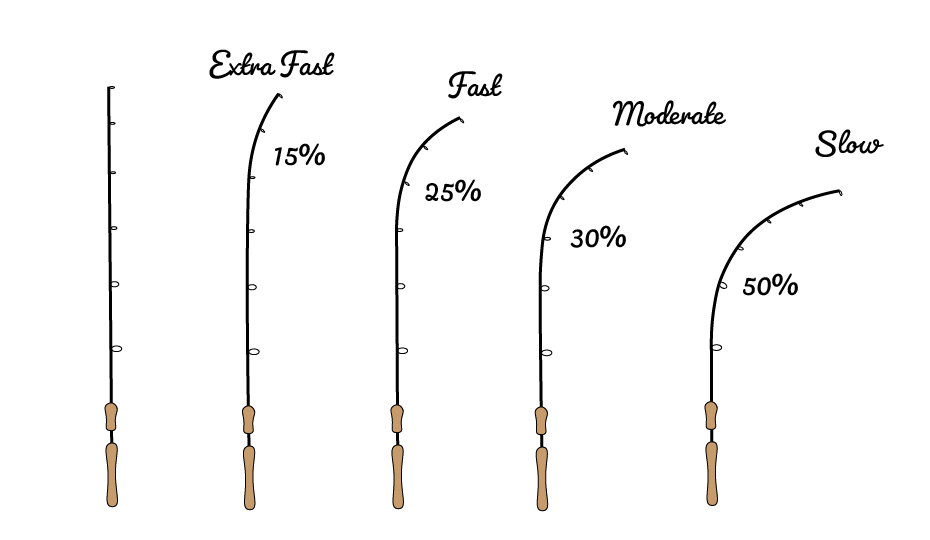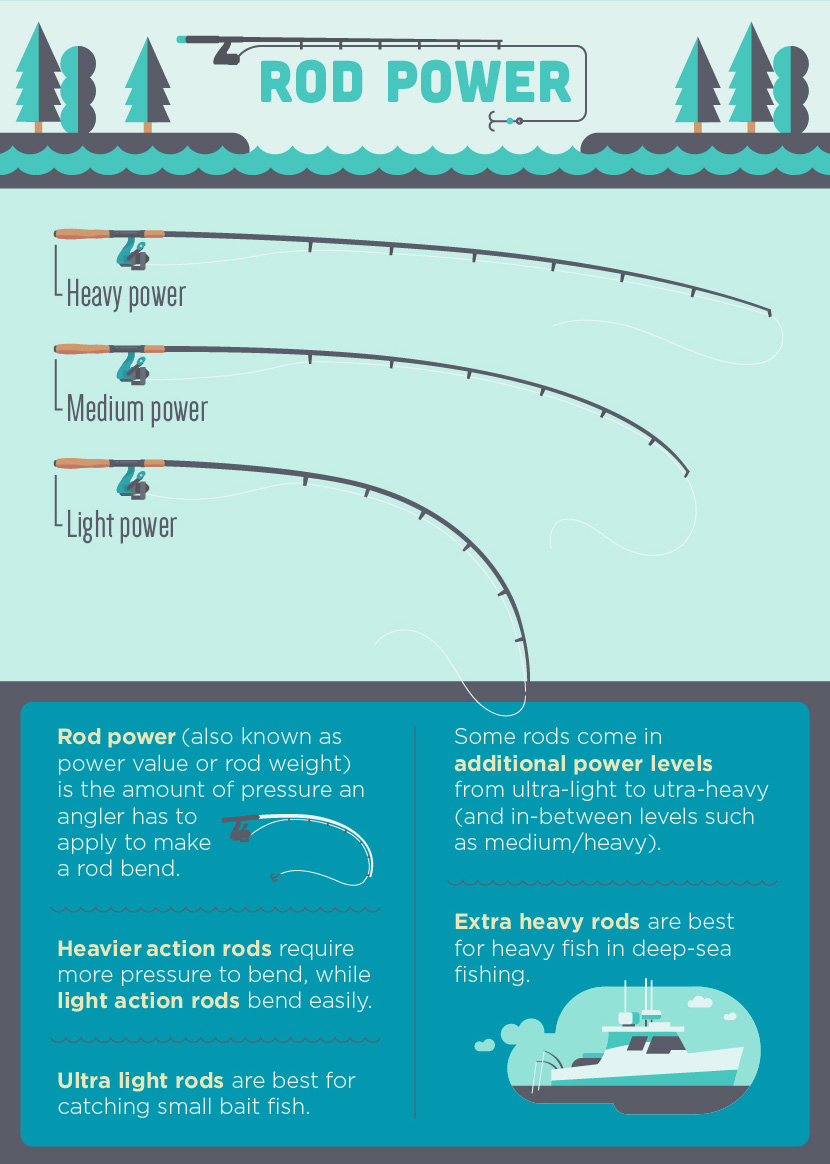Fishing is a popular recreational activity enjoyed by many individuals across the globe. Whether you are a seasoned angler or a beginner, choosing the right fishing rod is crucial to your success on the water. A fishing rod that is well-suited to your particular fishing needs will provide the right balance of strength, sensitivity, and flexibility to help you catch more fish.
However, with so many different types of fishing rods available, selecting the right one can be a daunting task. This guide will help you understand the key factors to consider when choosing a fishing rod, including the type of fishing you plan to do, the size and weight of the fish you are targeting, and your personal preferences as an angler. By the end of this article, you will be equipped with the knowledge to choose the perfect fishing rod for your next fishing trip, and hopefully, achieve the success you desire on the water.
- Determine the type of fish you want to catch and the fishing technique you’ll use.
- Decide on the rod’s length, power, and action based on your fishing needs.
- Choose a material for your rod, such as graphite or fiberglass.
- Consider the rod’s handle and reel seat for comfort and control.
- Check the rod’s guides and reel compatibility to ensure proper performance.
- Set a budget and choose a rod that fits within your price range.
This is a step-by-step tutorial on how to choose a fishing rod. By determining the type of fish and fishing technique, choosing the right length, power, and action, selecting the appropriate material, considering handle and reel seat, checking guides and reel compatibility, and setting a budget, you can find the perfect fishing rod for your needs.

How to Choose a Fishing Rod?
Fishing is a popular hobby and sport that requires the right equipment. One of the most critical pieces of equipment is the fishing rod. A fishing rod is used to cast the line and reel in the fish. Choosing the right fishing rod can make all the difference in your fishing experience. Here are some tips on how to choose the best fishing rod for your needs.
1. Determine Your Fishing Style
Before choosing a fishing rod, you need to determine your fishing style. There are different types of fishing, including freshwater fishing, saltwater fishing, fly fishing, and ice fishing. Each fishing style requires a different type of fishing rod. For example, a fly fishing rod is longer and more flexible than a standard fishing rod. Knowing your fishing style will help you choose the right fishing rod.
When considering your fishing style, also think about the type of fish you want to catch. Different fish species require different fishing methods and equipment. For example, if you want to catch large fish, you will need a rod with greater strength and power.
2. Consider the Rod Length
The length of the fishing rod is another essential factor to consider. Rod length affects casting distance, accuracy, and power. Longer fishing rods can cast the line farther, but they require more space, making them less suitable for small bodies of water. Shorter fishing rods are more accurate and provide more power to reel in larger fish.
Consider the type of fishing you will be doing when choosing the rod length. For example, if you plan to fish in a small stream, a shorter rod will be more suitable. On the other hand, if you plan to fish in a large lake, a longer rod will be more appropriate.
3. Check the Power and Action of the Rod
The power and action of the rod are other essential factors to consider when choosing a fishing rod. The power of the rod refers to its strength, while the action of the rod refers to how much it flexes when pressure is applied.
The power of the rod should match the type of fish you plan to catch. If you plan to catch large fish, you will need a rod with greater power. The action of the rod should also match your fishing style. For example, if you plan to use lures, you will need a fast action rod.
4. Look at the Material of the Rod
The material of the fishing rod affects its performance and durability. Fishing rods are made from different materials, including graphite, fiberglass, and composite materials. Graphite rods are lightweight and sensitive, making them suitable for freshwater fishing. Fiberglass rods are more durable and flexible, making them suitable for saltwater fishing.
Consider the type of fishing you plan to do when choosing the material of the rod. If you plan to fish in freshwater, a graphite rod will be more suitable. On the other hand, if you plan to fish in saltwater, a fiberglass rod will be more appropriate.
5. Check the Handle and Reel Seat
The handle and reel seat of the fishing rod affect its comfort and performance. The handle should be comfortable to hold and provide a good grip. The reel seat should be sturdy and hold the reel firmly in place.
Consider the size of your hands when choosing the handle of the rod. The handle should be the right size to provide a comfortable grip. The reel seat should also match the size of your reel to ensure a secure fit.
Conclusion
Choosing the right fishing rod is essential for a successful fishing experience. Consider your fishing style, the type of fish you plan to catch, the length of the rod, the power and action of the rod, the material of the rod, and the handle and reel seat when choosing a fishing rod. With the right fishing rod, you can enjoy a fun and successful fishing trip.
Frequent Asked Questions
Choosing the right fishing rod can make a big difference in your fishing experience. Here are five common questions and answers to help you choose the right fishing rod for your needs.
What type of fishing will I be doing?
The type of fishing you plan to do will determine the type of fishing rod you should choose. If you will be fishing in freshwater, a lighter rod will work best. If you will be fishing in saltwater, a heavier rod is needed to handle the larger fish found in those areas. Additionally, if you will be fishing from a boat, a longer rod will be needed to help you cast further.
On the other hand, if you plan to fish on shore, a shorter rod will be more practical. The type of fishing you plan to do will also determine the type of rod action you should choose. A fast-action rod will work best for catching larger fish, while a slow-action rod will work best for smaller fish.
What is the right length for a fishing rod?
The length of your fishing rod will depend on the type of fishing you plan to do. For freshwater fishing, a shorter rod is typically better, as it provides more control and accuracy when casting. For saltwater fishing, a longer rod is typically better, as it allows you to cast further and handle larger fish.
The length of your fishing rod will also depend on your height and arm length. As a general rule, your fishing rod should be about the same length as your height. If you have shorter arms, you may want to choose a slightly shorter rod to ensure you can cast comfortably.
What materials should I look for in a fishing rod?
The most common materials used in fishing rods are fiberglass and graphite. Fiberglass rods tend to be more durable and less expensive, while graphite rods tend to be more sensitive and lightweight.
Additionally, you should look for a fishing rod with high-quality guides and a comfortable handle. High-quality guides will help your line cast further and more accurately, while a comfortable handle will help you fish for longer periods without experiencing fatigue.
What is the difference between a one-piece and a two-piece fishing rod?
A one-piece fishing rod is a single, solid piece of material, while a two-piece fishing rod is made up of two separate pieces that can be taken apart for storage or transportation. One-piece rods tend to be more sensitive and durable, while two-piece rods tend to be more versatile and easier to transport.
If you plan to do most of your fishing in one location, a one-piece rod may be the best option. If you plan to travel with your fishing rod or fish in different locations, a two-piece rod may be more practical.
How much should I spend on a fishing rod?
The amount you should spend on a fishing rod will depend on your experience level and how often you plan to fish. If you are just starting out or plan to fish only occasionally, a less expensive rod will work fine. If you are an experienced angler or plan to fish frequently, investing in a higher-quality rod may be worth it.
Keep in mind that a higher price does not always mean a better fishing rod. Look for a rod that fits your needs and budget, and that is made from high-quality materials with good reviews from other anglers.

How to choose the perfect Shimano fishing rod | Fishing Gear | Anaconda Stores
In conclusion, choosing the right fishing rod can make a significant difference in your fishing experience. Whether you are a beginner or an experienced angler, it is important to consider factors such as the type of fish you are targeting, the fishing location, and your personal preferences. By doing so, you can find the perfect rod that fits your needs and enhances your chances of catching fish.
Remember that a fishing rod is an investment, and you should take the time to research and compare different options before making a purchase. With the right fishing rod in your hands, you can enjoy the thrill of fishing and create memories that will last a lifetime. So, take the time to choose wisely and get ready for your next fishing adventure!
